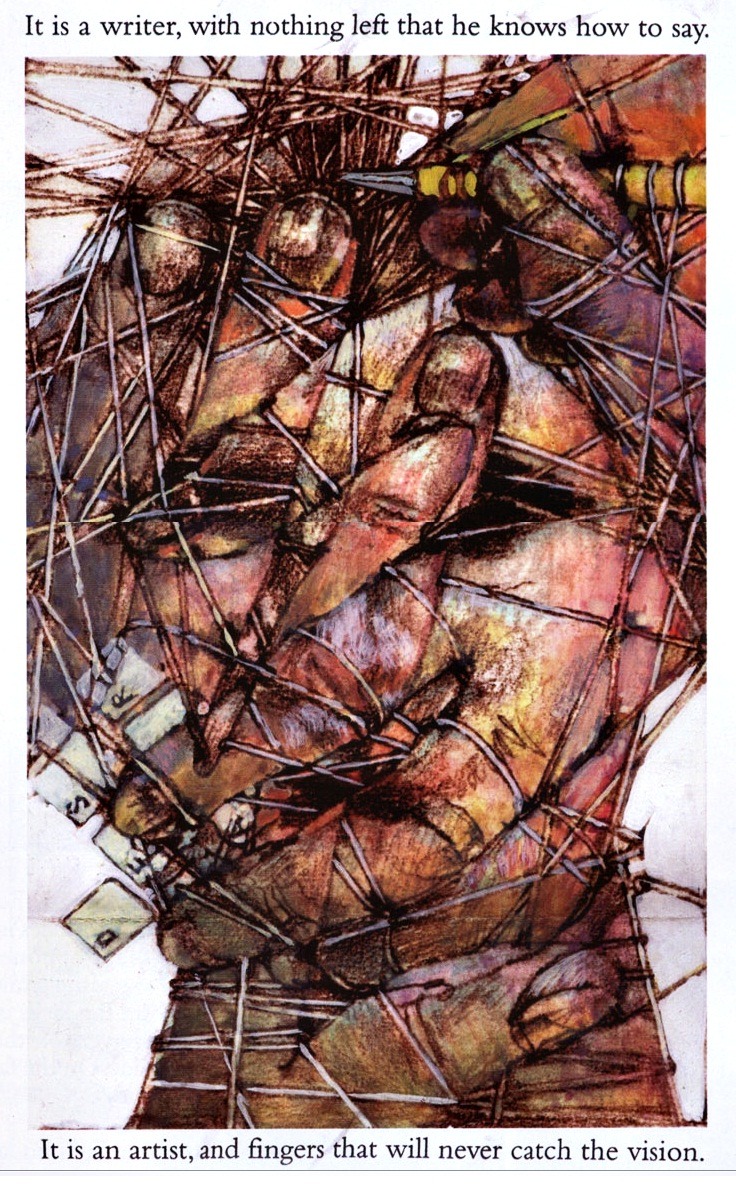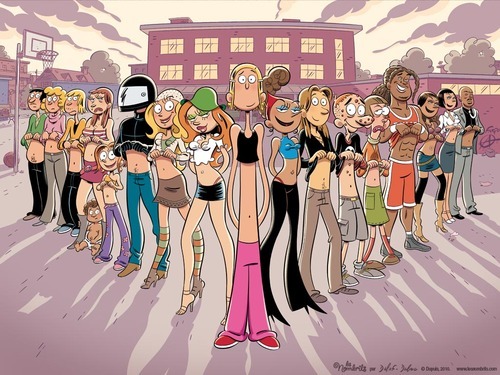
Hi! We have finally reached the conclusion of the comic class! We talked about the future of comics, such as webcomics and anime-influenced cartoons. Nowadays, since almost everyone is exposed to manga and anime, it is very common to see their influence show in Western cartoons and comics such as Avatar, Steven Universe, etc. I like to call their style hybrid.
Anyway, I haven't been following many web comics before, so it's actually refreshing to read them this time. I started reading Octopus Pie, and so far, I am really enjoying it! The main character, Eve, is easy to relate to. She's in her early twenties, lives away from her parents, and serious. She reminded me of myself. Meanwhile, her roommate, Hanna, is a complete opposite of Eve. She's a druggie, easy-going, quick-tempered, and impulsive. Their clashing personalities brings a lot of tension to the table, but deep down, they appreciate each other's companies. There is something satisfying about seeing their friendship blossom.
The nice thing about webcomic is the instant gratification I get when I read the punchline. Almost each page has some kind of punchline that either encourages us to read the next page, or leaves us snickering at the irony of the situation. In Octopus Pie, each page often help lead us to the next page at a relaxed and comfortable pace. It doesn't force us, things just fall in place. Which is why this webcomic is fun and easy to read!
Speaking of the future of comics, web comics are not that new. However, the Japanese has found new ways to enhance the online experience. For example, there is an ecchi manga series that often include fanservice like panty-shots, bouncing boobies, and everything sexy. The online version of the manga is interactive, so the readers can click at designated areas to trigger some kind of reactions and animations. For example, clicking on a character's hair will make it flutter, while clicking on her chest will make her shirt button to pop, and reveal her jiggling cleavage. Please don't judge me for doing that, I was simply curious! :). I can't post the link to the manga, but I am sure that there will be more to come.
All in all, I can see greater interactivity when it comes to reading comics in the future, and the line between watching and reading something will blur. Maybe, the only difference is pacing, where the reader can still pace their reading speed to their liking, unlike films. Cool!








